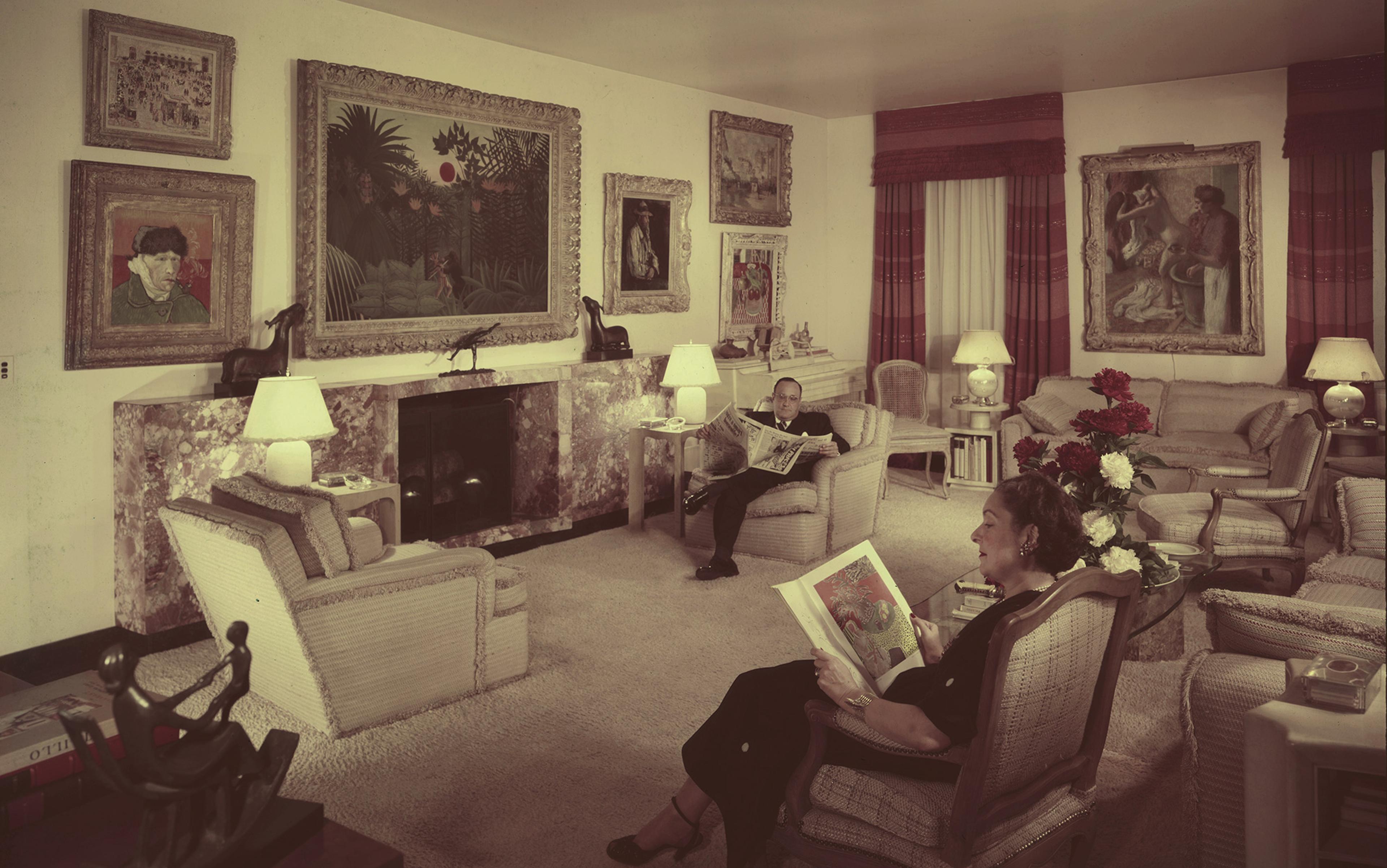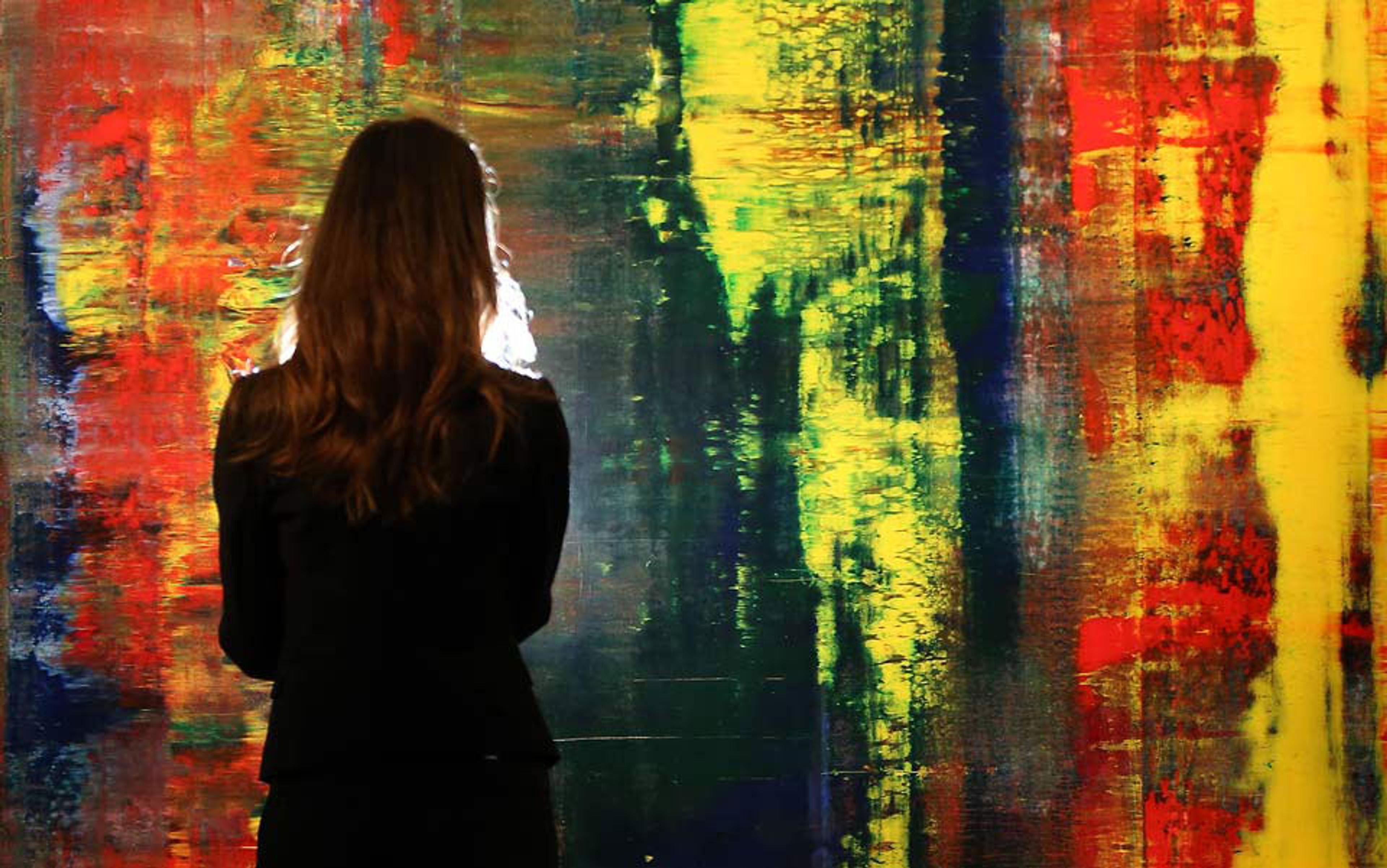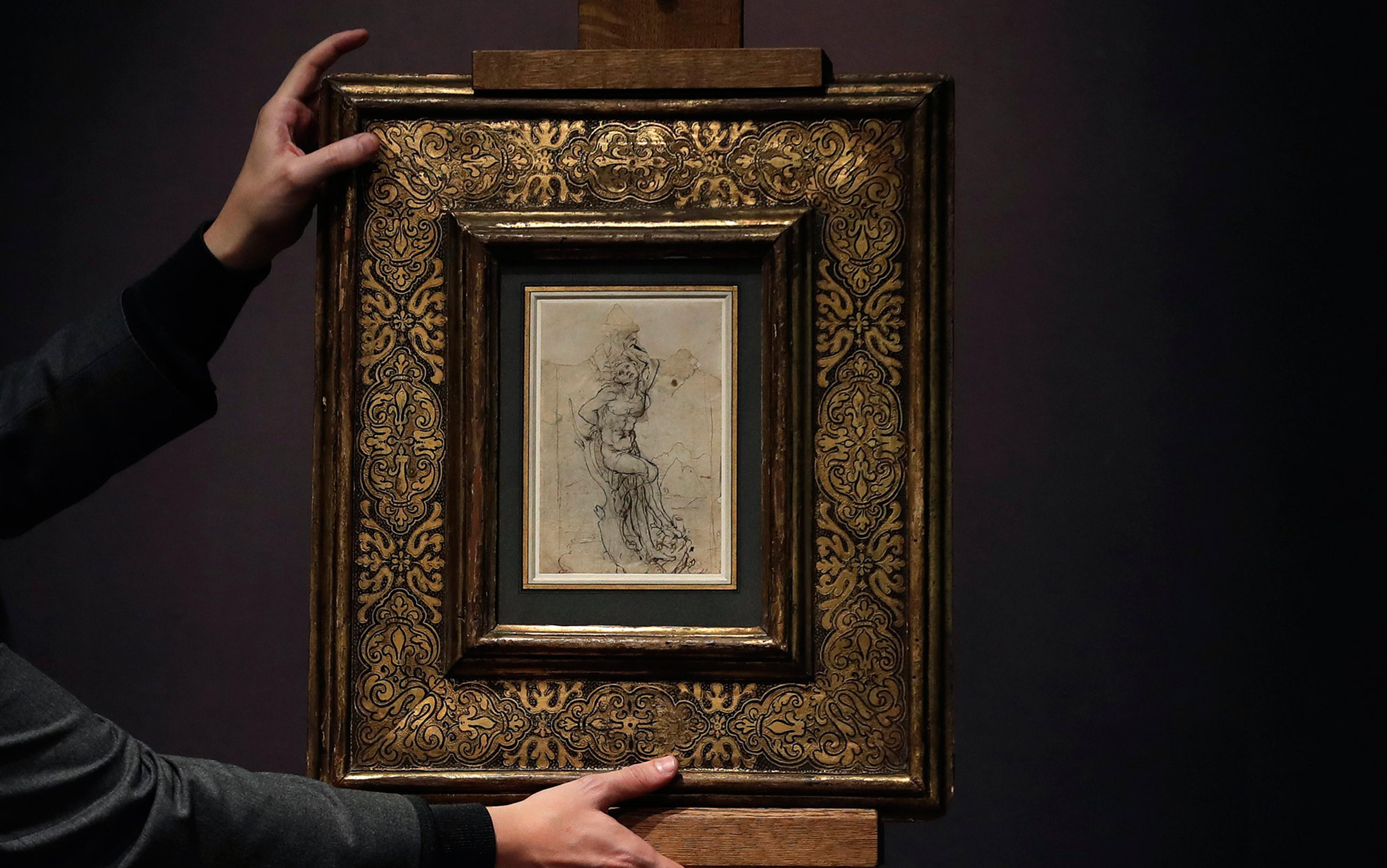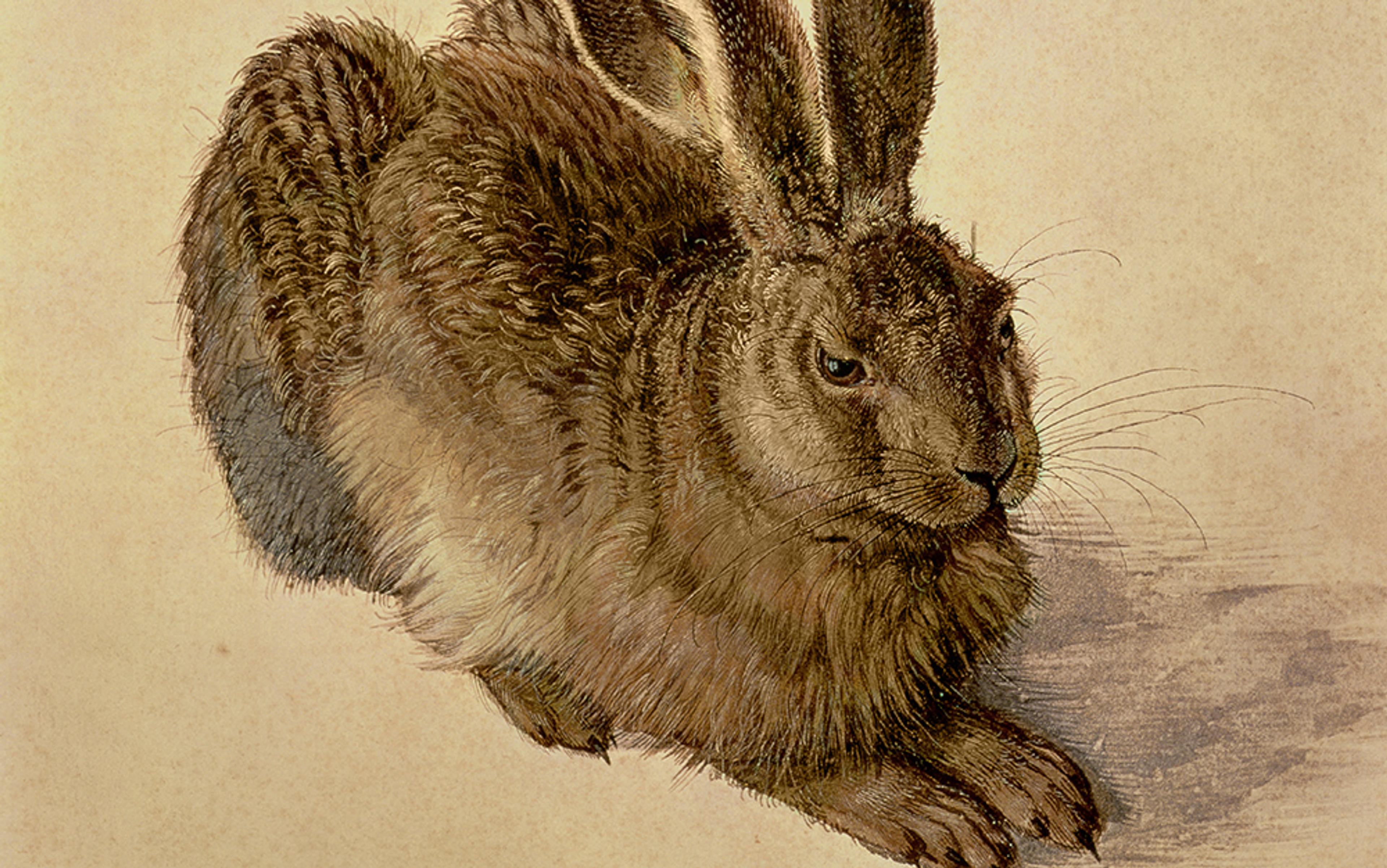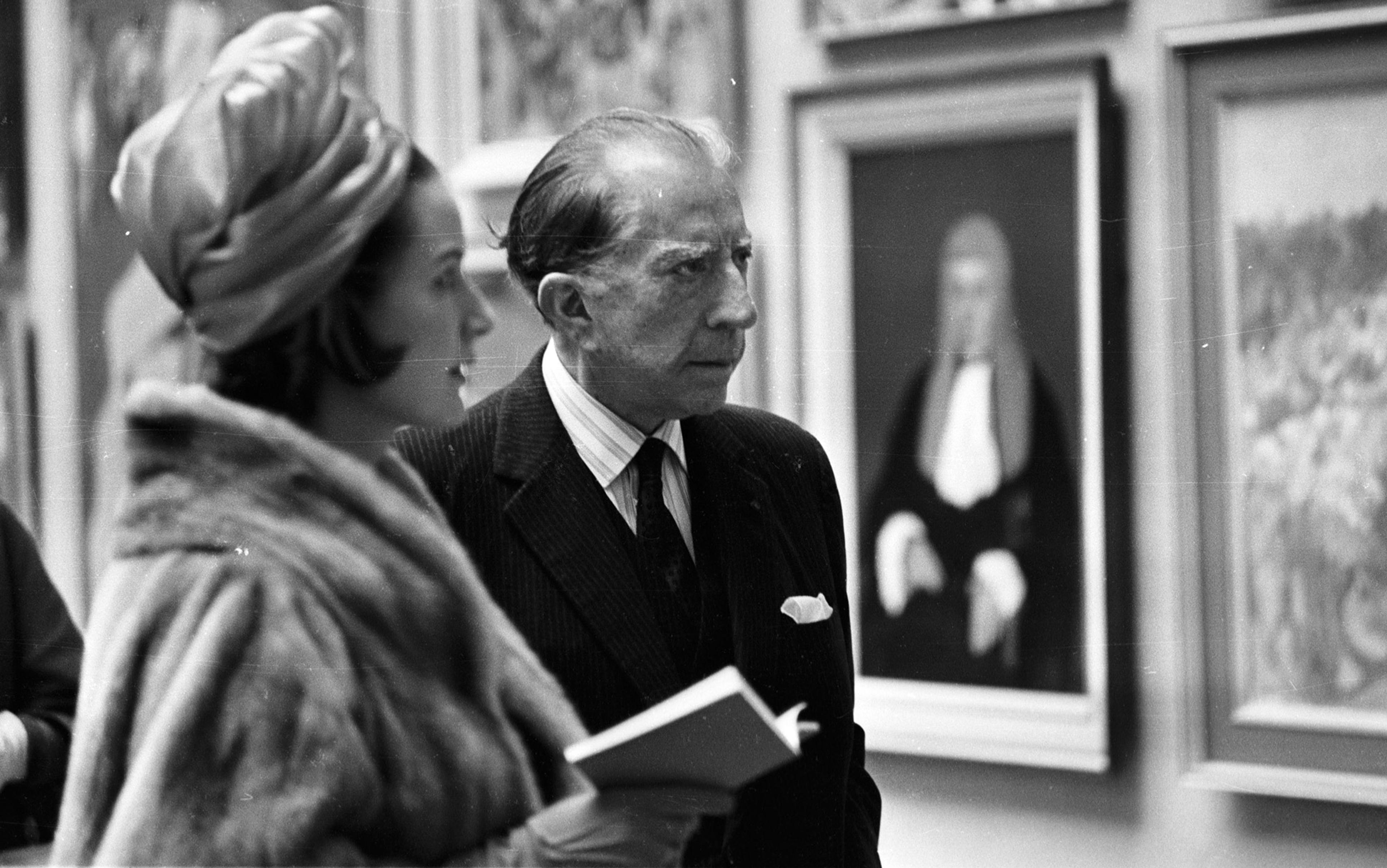On 16 November 2016, the investment guru and philanthropist Tom Marsico, one of the wealthiest men in the United States, became a little bit richer: an auction at Christie’s in New York sold Claude Monet’s Grainstack for $81.4 million. The price, which broke the record for a Monet painting at auction, was more than six times what Marsico paid for it in 2002, proving that few investments offer a more buoyant rate of return than a Monet.
Star performances by Monet in the auction houses of London and New York have become routine. Yet the exorbitant prices paid for his paintings today don’t stand in any kind of chastening counterpoint to Monet’s commercial fortunes during his own lifetime. The stories of the critical resistance to Impressionism – and consequent financial hardships of the movement’s painters – are, of course, the stuff of popular legend. To be sure, Monet did suffer some early hardships. ‘We have enough of that kind of painting,’ sniffed a juror in 1868, rejecting his works for the annual Paris Salon and thereby scuppering his chances of making sales.
That same year, Monet was (no doubt wisely) refused credit for paint, and he supposedly spent one entire winter eating nothing but potatoes. For much of his career, though, he was no starving artist, and the diet of potatoes soon came to be replaced by such favourites as foie gras from Alsace, truffles from Périgord, and lobster in peppercorn sauce. ‘You get the best cuisine in France at his house,’ enthused one visitor treated to the delights of gastronomy chez Monet.
The fact is that, after the age of 50 (he lived to be 86), Monet was unrelentingly flush with cash: a happy outcome for such a bon vivant. His wealth kept him in a fleet of automobiles, tweed suits from a fine English tailor in Paris, and a sizeable staff of gardeners to tend his famous gardens. In this respect, he has more in common with Damien Hirst or Jeff Koons, with their high-octane dealers, deep-pocketed collectors, and multimillion-dollar fortunes, than he does with artistic outliers such as the penniless Vincent van Gogh. His surname is an apt one, as headline writers and other punsters appreciate, enjoying its near-homonymity with ‘money’. He was, in fact, the Jazz Age’s answer to Koons, because in 1922, four years before his death, the sale of one of his canvases to a Japanese tycoon made him the world’s most expensive living artist.
Monet has long been the go-to artist for the rich and famous. Besides Marsico, recent owners have included David Rockefeller, the Queen Mother, Imelda Marcos, Prince Rainier, the hotelier Steve Wynn, and assorted Russian and Asian billionaires. Proclaiming both aesthetic taste and financial muscle, his canvases are dazzling consumer goods that are also lucrative financial assets.
Monet’s paintings functioned in much the same way during his own lifetime – as trophies that graced the collections of an equally formidable international roster: the Turkish-born financier Isaac de Camondo, the margarine king Auguste Pellerin, the Japanese industrialist Kojiro Matsukata, the Russian textile merchant Sergei Shchukin, and the Azerbaijani oil magnate Jacques Zoubaloff. However, many of Monet’s earliest and most reliable purchasers were American, so much so that as early as 1888 a French critic accused him of creating works ‘geared to New York taste’. Discerning Gilded Age plutocrats (often compelled by their even more discerning wives) showed the same indomitable acumen in putting together their art collections as they did in amassing their dizzying fortunes in railroads or lumber. By the 1890s, few of them could visit Paris without touring the galleries of Georges Petit or Paul Durand-Ruel – Monet’s tireless picture dealers – and then returning home with a crate of canvases.
This 19th-century love affair between American money and innovative French art might seem an unlikely one. Surveying his fellow Americans in Europe in the 1870s, Henry James had been appalled: ‘There is but one word to use in regard to them – vulgar, vulgar, vulgar … It’s the absolute and incredible lack of culture that strikes you in common travelling Americans.’ Yet it was these Americans, or at least the opulent advance guard among them, who would come to the rescue of struggling and despised French artists, and who found in Impressionism the beauty and value that for many decades evaded so much of the French artistic establishment.
Most of these men were nouveau riche: self-made millionaires who piled up their fortunes after the Civil War in dry goods, real estate, mining, railroads and finance. To be fair, they did take some nudging: the business of selling Impressionist canvases to newly minted millionaires – men trained to spot the value of a commodity – was neither easy nor inevitable. Collectors needed to be convinced of both the aesthetic warrant and the commercial wisdom of purchasing modern art. A Monet was a very different proposition from many of their other purchases, such as the coffered ceilings or Renaissance frescoes that came from the warehouse in Florence of Stefano Bardini, the so-called ‘prince of antiquaries’. Bardini’s treasures were so bountiful, and so in-demand, that the architect Stanford White kept a ship at anchor off Livorno, ready to transport them back to embellish the mansions of his Gilded Age clients, such as Colonel Oliver Hazard Payne. One of the richest men in the US, Colonel Payne adorned his homes with Italian friezes, French Renaissance oak doors, Robert Adam mantels, carved Italian ceilings, and paintings by Diego Velázquez, Peter Paul Rubens and Sir Joshua Reynolds. The historian Henry Adams, paying him a visit, claimed that his collection included things ‘such as kings mayn’t now have’.
‘Our new millionaires having succeeded in accumulating money, now seek social recognition’
And yet among Colonel Payne’s possessions were two oil paintings by Monet. Their presence on the walls of his mansion testify to the success of a new experiment in marketing – a new way of selling art in the US. The triumph of Monet and Impressionism in the US required marketing genius, financial risk and what today might be called good word-of-mouth. It owed a lot to enterprising dealers such as Durand-Ruel, the subject of a 2015 exhibition that opened at the Philadelphia Museum of Art following stops in Paris and London. Equally important for Impressionist fortunes was the impresario James F Sutton, a prominent dealer and collector who at the turn of the 20th century owned more Monets than anyone else in the US.
Sutton arrived on the scene at a time when US captains of industry were putting their fortunes in pursuit of social esteem. Or, as a New York society columnist put it in 1885: ‘Our new millionaires – and their name is legion – having succeeded in accumulating money, now seek social recognition.’ Sutton, the son-in-law of R H Macy, founder of the department store, catered to their aspirations. In 1883, along with the auctioneer Thomas E Kirby, he co-founded the American Art Association (AAA), an upmarket art gallery and auction house intended to promote, exhibit and sell US art. However, Sutton soon began cultivating a more exotic and expensive species of artist. Despite the 1883 Tariff Act, which imposed a 30 per cent tax on foreign works of art entering the US, the AAA became one of the country’s most important purveyors of high-end international paintings (a tradition continued via its eventual incarnation as the New York branch of Sotheby’s).
Intended to choke off the supply of European luxury goods adorning Gilded Age mansions, the Tariff Act signalled an important shift in aesthetic tastes. Prior to the Civil War, Americans had been resolutely provincial and isolationist in their preferences, with art critics lauding the ‘fresh, healthy land’ of the New World as the best place to discover sublime and revivifying artistic visions. As the historian Lois Fink has noted, the antebellum guardians of the country’s culture believed their art would trump the Europeans’, ‘so long as the American artist kept himself untainted from the decadent, worn-out European traditions’ – a philosophy most forcefully expressed in Ralph Waldo Emerson’s speech ‘The American Scholar’ (1837), which disdained ‘the sere remains of foreign harvests’.
However, the Civil War, along with the political and economic corruption that followed – the bleak period that the historian Lewis Mumford dubbed the ‘Brown Decades’ – caused much anguished self-scrutiny and reassessment. Suddenly, the supposedly decadent, worn-out European traditions did not look so bad, while the US could be seen, as James glumly declared in 1874, as a ‘great unendowed, unfurnished, unentertained and unentertaining continent’.
James was part of an influx of young Americans to Europe. France, in particular, exerted a fascination. In The Greater Journey: Americans in Paris (2011), David McCullough shows how the country’s best and brightest – James Fenimore Cooper, Samuel F B Morse, Henry Wadsworth Longfellow, Oliver Wendell Holmes, Elizabeth Blackwell – went to Paris to hone their intellects at its celebrated institutions, and perhaps also to enjoy, as Cooper admitted, ‘a little pleasure concealed in the bottom of the cup’. For Americans fleeing their unendowed and unentertaining homeland, Paris offered both intellectual heft and la vie bohème.
After the Civil War, young American artists flocked to the studios of Paris rather than, as an earlier generation had done, to the epic vistas of the Hudson River or the Sierra Nevada. Arriving with the plan of learning from renowned professors at the École des Beaux-Arts the tricks of painting solemn and serious historical melodramas, many quickly fell under the spell of fresher and more exhilarating artistic visions. Returning to the US, they sang the praises of all they had seen.
The first of their delights had been the tawny, open-air visions of Barbizon painters such as Théodore Rousseau and Jean-François Millet. For many US collectors, the path to Monet and Giverny first wound through the village of Barbizon, 40 miles south of Paris, where a school of landscapists devoted to humble scenes of rural life had developed in the 1830s. The huge popularity of Millet in America in the decades after the Civil War can partly be explained by the fact that pupils who studied under him at Barbizon in the 1850s and ’60s, most notably William Morris Hunt, became his enthusiastic apostles when they returned to the US, giving word-of-mouth recommendations. In later years, Hunt even escorted to Barbizon fellow Bostonians such as Quincy Adams Shaw, who would ultimately amass a collection of 26 Millet paintings. Capitalising on this new market, dealers specialising in the Barbizon school opened their doors in Boston and New York in the years after the Civil War. The American romance with modern French painting was ready to begin.
Sutton and the AAA were at the forefront of the Barbizon invasion. But how much social prestige could there be in owning a Millet or a Rousseau? A Raphael or a Rembrandt was one thing, but the Barbizon painters, untested by time, quite another. Millet in particular was regarded with suspicion by conservatives in France for his seemingly politically charged scenes of the common man. ‘A whole social revolution is written on this canvas,’ one critic wrote of The Angelus (1859), which showed two peasants in a potato field bowing their heads at the tolling of distant church bells. How could such a painter appeal to the swaggering barons of US capitalism?
Prospective buyers of this new French art needed comme il faut reassurances. The art historian John Ott has demonstrated how Sutton’s genius was to take art out of the musty showrooms of private galleries (even Durand-Ruel’s Paris showrooms reminded one critic of a dungeon) to create spectacles of refined luxury that catered to the social ambitions and expectations of his wealthy clients. A series of rituals were established – some of them, perhaps, lessons Sutton had learned from his days at Macy’s. He cleverly packaged the canvases of Barbizon artists, once disparaged by a French art official as ‘men who don’t change their underwear’, as luxury goods, badges of conspicuous consumption like racehorses, porcelain or vintage wines.
The selling of paintings had become a public spectacle, to be watched with suspense and rewarded with applause
The setting was all-important. Previews were held in the AAA’s palm-furnished galleries in Madison Square (described by one journalist as ‘so lofty, so finely lighted, and so luxuriously quiet’) to the gentle strumming of classical musicians. An 1884 Harper’s Weekly illustration depicted women in fashionable, fur-trimmed attire mingling before ornately framed paintings in an elegant room featuring plush sofas and a fireplace. The auctions themselves took place at Chickering Hall, a 1,500-seat theatre on Fifth Avenue that staged operas and concerts. Scarlet-covered, gilt-lettered, copiously illustrated auction catalogues were produced, at once beautiful and authoritative. They were sold for as much as $23.
The AAA’s auctions quickly became, as one art critic noted in 1887, ‘the favourite meet of the rich and fashionable’. They took place in the evening, like an opera, with the paintings displayed before crimson curtains and illuminated by gas jets. The auctioneer, clad in a tuxedo, stood at the podium like an orchestra conductor. As his gavel came down, Chickering Hall resounded with enthusiastic clapping, as if at the climax of a well-known aria or finely executed pas de deux. The selling of paintings had become a public spectacle, something to be watched with suspense and rewarded with applause.
Sutton’s strategies – compared by some skeptics to those of P T Barnum – brought him great success. Throughout the 1880s, the AAA routinely broke records for the highest prices ever paid for works of art auctioned in the US, all of them, crucially, for modern paintings. His success in selling French paintings in the US led one critic to boast in 1889 that the country ‘owned more masterpieces of French art than France herself’. His triumphs culminated in 1890 with his sale of Millet’s The Angelus for 750,000 francs ($150,000) – the highest price ever paid for a modern painting.
Yet the sun was setting on Millet’s fortunes as implacably as it did above the bowed heads of his devout potato-diggers. Sutton was already cultivating the next generation of French painters, ones whose favourite themes were not downtrodden peasants toiling in harsh landscapes but rather the recreational delights of cafés, racetracks, sailboats, suburban gardens and sun-mottled rural beauty spots. ‘Impressionism becomes the fashion,’ wrote a Boston journalist in 1891, observing that collectors who once sought the honeyed tones of the Barbizon School were now sending to Paris for the vibrant, coruscating colour harmonies that he dubbed ‘Motley and Monet’. By 1892, an American art journal could refer to Impressionism as ‘the current cult’.
Sutton was partly responsible for this switch of taste. The historian Malcolm Goldstein has argued that he was the first American to recognise not merely the aesthetic but also the commercial value of Impressionism. In 1885 Sutton had gone to Paris to see their dealer Durand-Ruel, who two years earlier exhibited works by Monet, Manet, Renoir, Sisley and Pissarro at a trade fair in Boston. No Impressionist sales resulted, possibly because the exhibition was staged in an immense warehouse that doubled as a skating rink in winter – a far cry from Sutton’s swanky premises. Durand-Ruel remained doggedly unbowed, and in 1886, at Sutton’s bidding, he sent a much larger delegation of 289 works by the ‘Impressionists of Paris’ to be exhibited in New York under the aegis of the AAA. This time the Impressionists got the magic Sutton makeover – as well as his expertise in how to dodge the 30 per cent tariff. The AAA produced a slick, informative catalogue that featured, among other things, the translation of a 1885 article from a French newspaper that confidently proclaimed Monet the ‘head of a school … a landscapist of first rank’.
With a total of 40 works, Monet was the most conspicuous artist in the show. He entertained concerns about risking his paintings in what he called ‘the land of the Yankees’. But Durand-Ruel insisted. ‘Do not think that Americans are savages,’ he reassured another of his reluctant artists, Henri Fantin-Latour. ‘On the contrary, they are less ignorant, less close-minded than our French collectors.’ To his relief, the exhibition was a success: 36 of the 40 Monets sold, including 14 to the collector Abel W Kingman. Although the prices were modest compared with those of Millet, America’s long infatuation with Monet had begun.
Monet’s paintings in gold frames shared space with tapestries, marble columns and tigerskin rugs
Sutton’s ritzy showrooms and deft salesmanship were not the only reason for the success of Impressionism in the US. A small handful of Americans was already buying Impressionist works. Once again, as with the Barbizon School, US artists studying in France helped whet the appetites of well-heeled friends and patrons back home. Mary Cassatt bought paintings for her brother Alexander, president of the Pennsylvania Railroad. In the space of a few years in the 1880s, she acquired more than 30 paintings for his mansion in Philadelphia. ‘It is a beauty,’ their father reported to Alexander after seeing a Monet that Mary had bought for him for 800 francs in 1881, adding presciently: ‘and you will see the day when you will have an offer of 8,000 for it.’ Cassatt senior’s appreciation of the Monet for both its aesthetic qualities and its value as a profitable investment would become typical of US collectors.
Mary Cassatt also inspired her friend Louisine Elder, whom she met in Paris in 1874; at the tender age of 22, she became the first American to purchase a Monet, which she got for 300 francs in 1880. In time, as Louisine Havemeyer, wife of the sugar baron Henry O Havemeyer, she would adorn her Tiffany-decorated mansion on Fifth Avenue with 30 Monets.
In the early 1890s, Cassatt introduced another important collector to the Impressionists: Bertha Palmer, wife of Potter Palmer, the Chicago department store magnate, whose commercial strategies – replacing cramped retail premises with spacious outlets and attractive displays – had influenced the head of Macy’s (and by extension, possibly, Sutton’s innovative approach to selling paintings). In 1891, Palmer embarked on a Monet buying spree, picking up 25 of his canvases to festoon her turreted mansion on Chicago’s Gold Coast. Over the next two decades, she bolstered her collection with many more of his canvases, one of which would be Marsico’s record-breaking Grainstack. The appearance of Monet’s paintings in gold frames on the walls of her Louis XVI drawing room, where they shared space with tapestries, marble columns and tigerskin rugs, conferred on them the status of luxury goods.
The next step for US collectors was to enshrine Monet in the museums founded in cities such as Boston, New York and Chicago in the closing decades of the 19th century. The transition from private mansions to public museums gave Monet the imprimatur of institutional authority and – more important still – exposure to a much wider swath of society. He became the first Impressionist to cross the threshold of an American museum when, in 1889, Erwin Davis, a mine owner and wealthy speculator, donated two of his paintings to the Metropolitan Museum of Art in New York. At the time, neither Monet nor any of the other Impressionists was represented in a French museum.
The most famous donation was that of Louisine Havemeyer to the Met in 1929, a bequest that included eight Monet paintings. By then, the Museum of Fine Arts in Boston already owned more than 20 Monets donated over the previous decades (the first three as early as 1906) by a dozen local collectors, some of whose purchases went back to the early 1890s. In Chicago, the Art Institute was enriched in 1922 by Bertha Palmer’s bequest. This donation offered some compensation for the Art Institute failing to acquire 30 of Monet’s large-scale water lily compositions two years earlier, when a Chicago newspaper reported that the artist had turned down the museum’s offer of $3 million. This sum is certainly wrong – but just as Oscar Wilde didn’t actually need to stroll down Piccadilly with a lily in his hand for people to believe he’d done so, it didn’t take much for people to credit Monet with an ability to attract colossal sums.
That ability was emphatically corroborated in 1921, when Monet was paid a visit by the Japanese industrialist Kojiro Matsukata, president of the Kawasaki Dockyard Company. ‘Go ahead and ask high prices,’ Matsukata urged Monet when he came to Giverny in search of paintings to furnish the personal museum he was planning, the Kyoraku Bijutsu Kwan, or Art Pavilion of Pure Pleasure. The canny painter duly obliged, and some 20 canvases promptly changed hands, as did a cheque for a million francs.
In the decades after the Second World War, Monet’s paintings appreciated at an average annual rate of 21 per cent
Almost a year later, Matsukata returned to Giverny. This time, he handed Monet a cheque for 800,000 francs and asked him to choose a painting for him. Which painting Monet selected is uncertain, although it was probably Water Lilies, the 6½ x 6½-foot canvas now in the National Museum of Western Art in Tokyo. The 800,000-franc price made the canvas the most expensive work of art by a living artist – a record previously held by Degas’s Dancers Practising at the Bar, bought by Havemeyer for 478,500 francs in 1912. Since she bought the canvas from the estate of its previous owner, Degas received none of this largesse, and quipped that he felt like the racehorse who wins the Grand Prix and gets nothing but oats for dinner. Monet, on the other hand, banked Matsukata’s cheque himself.
Painters often pay for commercial success during their own lifetime with contempt or oblivion in the hereafter. ‘Many people who had great reputations,’ the artist Jean-Louis-Ernest Meissonier once observed with an anxious eye on his own posterity, ‘are nothing but burst balloons now.’ Meissonier had long been, like Millet, a darling of US multi-millionaires. In 1887, Sutton sold one of his Napoleonic scenes, 1807, Friedland, at Chickering Hall for $66,000, then the highest price ever paid for a painting at auction in the US. But Meissonier’s balloon did indeed burst in the years following his death in 1891. ‘What remains today of all this magnificence?’ an art historian asked rhetorically in 1925.
Monet, who died that same year, and who, like Meissonier, was showered with banknotes and glory, might have suffered the same grim posterity. Although his place in the history of art was assured thanks to his early work with the Impressionists, he was briefly buffeted by the winds of critical change during the interwar years. His late water lily paintings – huge, vaporous visions of reflective waters and changing light painted in the last dozen years of his life – fell under suspicion when the more solid constructions of Cézanne and Cubism were the dernier cri. But within a few years, Monet’s works excited contemporary interest, thanks in part to the perceived affinities between these late paintings and Abstract Expressionism. Since then, his reputation has never flagged. An economist has calculated that, in the decades after the Second World War, Monet’s paintings appreciated at an average annual rate of 21 per cent. Small wonder that his name has become synonymous with money, and that he remains a favourite with shrewd businessmen in the land of the Yankees.
